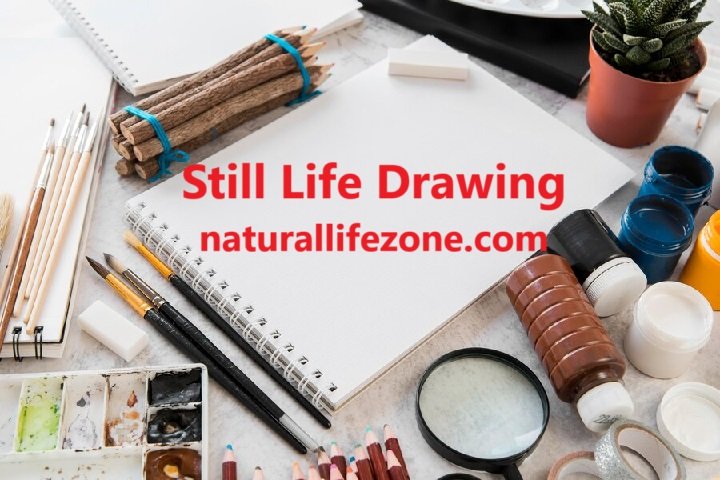Still Life Drawing: Techniques, Tips, and Inspiration for Beginners
 Still Life Drawing
Still Life Drawing
Still life drawing is a fundamental skill in art that allows artists to study objects in detail, understand light and shadow, and practice composition. Whether you are a beginner or an experienced artist looking to refine your skills, mastering still life drawing can elevate your artwork and deepen your understanding of the visual world. This guide will take you through the basics of still life drawing, offer helpful techniques, and provide tips to get started on your artistic journey.
What is Still Life Drawing?
Still life drawing is the depiction of inanimate objects arranged in a thoughtful composition. These objects are often everyday items like fruits, flowers, bottles, books, or vases. The purpose of still life drawing is to observe shapes, textures, lighting, and perspective, capturing these elements accurately on paper.
Historically, still life has been a crucial subject in art, particularly during the Renaissance when artists used it to study realism and perfect their ability to render lifelike images. Today, still life continues to be an important genre for artists to practice their technical skills.
Why Still Life Drawing is Important
- Observation Skills: Drawing still life objects sharpens your ability to observe details closely. You learn to notice subtle differences in shape, texture, and color that you might otherwise overlook.
- Understanding Light and Shadow: Still life setups allow you to explore how light interacts with objects. By studying shadows, highlights, and reflections, you can create more three-dimensional and realistic drawings.
- Composition Practice: Arranging objects in a still life setup helps develop your understanding of composition, balance, and how elements in your artwork interact with each other.
- Improving Drawing Accuracy: Regularly drawing from life is an excellent way to improve your accuracy and proportions when sketching or rendering any subject.
Materials You Need for Still Life Drawing
Before diving into your first still life drawing, it’s important to have the right tools. Here’s a basic list of materials to get started:
- Pencils: A range of pencils from soft (B) to hard (H) will allow you to create different levels of shading and detail.
- Erasers: A kneaded eraser is ideal for gently lifting graphite from the paper without damaging it. A standard eraser is also useful for precise corrections.
- Paper: Choose high-quality drawing paper with a smooth surface for detailed work, or textured paper if you prefer a rougher finish.
- Blending Stumps: These are great for smoothing out pencil marks and blending tones for a more seamless look.
- Charcoal or Graphite: Depending on your preference, you can use either charcoal sticks or graphite pencils to create deep shadows and contrast.
- Drawing Board: A sturdy surface to tape your paper on will help keep it in place while you work.
Optional Materials
- Colored Pencils: For those who want to add color to their still life drawings.
- Markers or Ink: For more defined outlines or to add an illustrative feel to your artwork.
- Fixative Spray: Helps to set your drawing and prevent smudging after completion.
Setting Up a Still Life Composition
One of the joys of still life drawing is that you have complete control over the objects and their arrangement. Here are a few tips on setting up a still life composition:
1. Choose Your Objects Wisely
Start with simple objects if you’re a beginner, such as fruits, bottles, or geometric shapes. As you gain confidence, you can introduce more complex items like flowers, fabrics, or glassware.
2. Consider Shape and Texture
Choose objects that offer a variety of shapes and textures to make your drawing more interesting. For instance, a smooth apple next to a wrinkled leaf will give you a chance to practice different textures and shading techniques.
3. Pay Attention to Lighting
Lighting plays a significant role in still life drawing. A single light source, such as a desk lamp, creates strong contrasts and defined shadows, making it easier to capture depth and dimension. Experiment with the direction of the light to find the most interesting arrangement of shadows and highlights.
4. Focus on Composition
Think about the placement of your objects and how they relate to each other in the space. A good composition will lead the viewer’s eye around the artwork. Try arranging your objects in a triangle or using the rule of thirds to create a dynamic composition.
Essential Techniques for Still Life Drawing
Now that you’ve set up your still life, it’s time to start drawing. Here are some essential techniques to keep in mind:
1. Start with a Light Sketch
Begin by lightly sketching the basic shapes of your objects. Don’t worry about details at this stage—focus on getting the proportions and placement right. You can use basic geometric shapes like circles, ovals, and rectangles to represent the objects.
2. Observe Negative Space
Negative space is the area around and between the objects. Paying attention to negative space can help you judge proportions more accurately. If your objects don’t seem to fit together correctly, check the negative spaces—they can often reveal where adjustments are needed.
3. Gradual Shading
When it comes to shading, start with light layers and gradually build up the darker tones. Use hatching (parallel lines) and cross-hatching (intersecting lines) to create a range of values, from light to dark. Blending stumps can help soften your shading and create smooth transitions between tones.
4. Pay Attention to Highlights and Shadows
Observe where the light hits your objects and where the shadows fall. Highlights should be left white or lightly shaded, while shadows can be built up using darker pencil strokes. This contrast will give your drawing a sense of depth and realism.
5. Add Texture
Different objects have different textures, and conveying them accurately can bring your still life drawing to life. For smooth surfaces, use soft shading and blend well. For rough textures, such as wood or fabric, use more jagged, uneven lines to represent the texture.
Common Challenges in Still Life Drawing (and How to Overcome Them)
Still life drawing can present a few challenges, especially for beginners. Here’s how to address some common issues:
1. Getting the Proportions Right
If your objects look out of proportion, try using a measuring technique. Hold your pencil at arm’s length and use it to measure the height and width of each object relative to each other. This will help you keep the proportions accurate.
2. Flat Looking Objects
If your drawing looks flat, it’s likely because the shading isn’t creating enough contrast. Focus on deepening the darkest shadows and brightening the highlights to add more dimension. Remember, light and shadow are key to creating the illusion of three-dimensionality.
3. Overworking the Drawing
It’s easy to get caught up in adding too many details, but overworking your drawing can lead to smudging or a cluttered look. Take breaks and step back from your work to assess it from a distance. Sometimes, less is more when it comes to details.
Inspiration and Advanced Ideas for Still Life Drawing
Once you’ve mastered the basics, you can start experimenting with different styles and approaches to still life drawing.
1. Incorporate Color
Try introducing color into your still life drawings with colored pencils, pastels, or watercolor. This adds another layer of complexity, as you’ll need to consider how light and color interact on your objects.
2. Abstract Still Life
For a more modern approach, experiment with abstracting the shapes and forms of your still life objects. Focus on exaggerating shapes, colors, or textures to create a more stylized and expressive work of art.
3. Mixed Media
Combine various materials such as charcoal, ink, or even collage elements into your still life drawings. This can give your work a more dynamic and layered look.
4. Themed Still Life
Create a still life based on a specific theme or narrative. For example, you could arrange objects that tell a story or evoke a certain mood, such as a collection of vintage items to convey nostalgia or everyday objects to explore modern life.
Conclusion
Still life drawing is a versatile and rewarding practice that can help artists of all levels refine their skills. Whether you are learning the basics of observation and composition or experimenting with advanced techniques, still life provides endless opportunities for creativity and artistic growth. So gather some objects, set up your composition, and start drawing today!
Read More: Life Processes Class 10 Notes – Comprehensive Guide for Biology Exam Preparation




